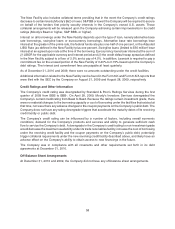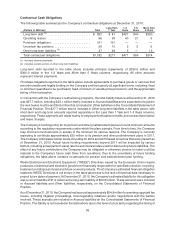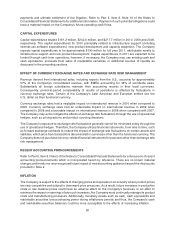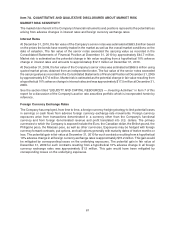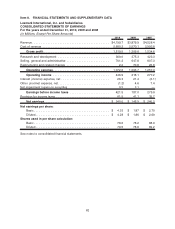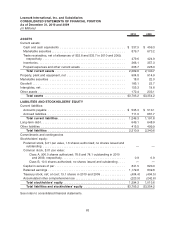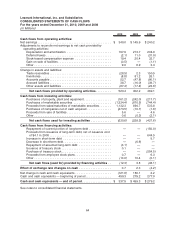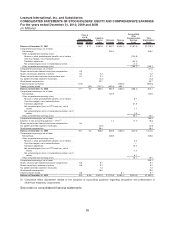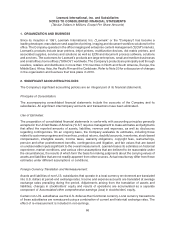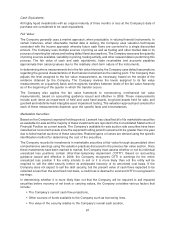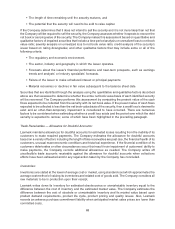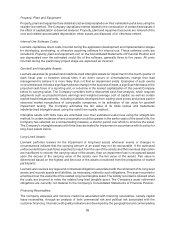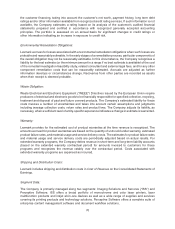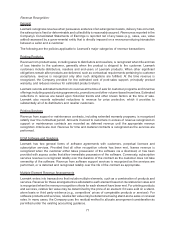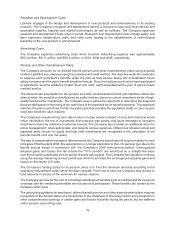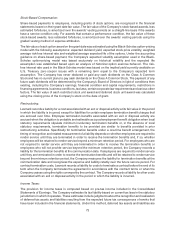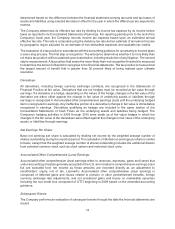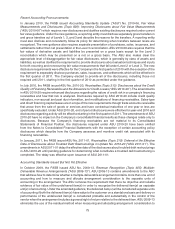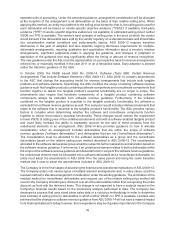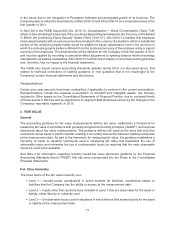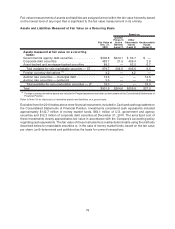Lexmark 2010 Annual Report Download - page 74
Download and view the complete annual report
Please find page 74 of the 2010 Lexmark annual report below. You can navigate through the pages in the report by either clicking on the pages listed below, or by using the keyword search tool below to find specific information within the annual report.• The length of time remaining until the security matures, and
• The potential that the security will need to be sold to raise capital.
If the Company determines that it does not intend to sell the security and it is not more likely than not that
the Company will be required to sell the security, the Company assesses whether it expects to recover the
net book or carrying value of the security. The Company makes this assessment based on quantitative and
qualitative factors of impaired securities that include a time period analysis on unrealized loss to net book
value ratio; severity analysis on unrealized loss to net book value ratio; credit analysis of the security’s
issuer based on rating downgrades; and other qualitative factors that may include some or all of the
following criteria:
• The regulatory and economic environment.
• The sector, industry and geography in which the issuer operates.
• Forecasts about the issuer’s financial performance and near-term prospects, such as earnings
trends and analysts’ or industry specialists’ forecasts.
• Failure of the issuer to make scheduled interest or principal payments.
• Material recoveries or declines in fair value subsequent to the balance sheet date.
Securities that are identified through the analysis using the quantitative and qualitative factors described
above are then assessed to determine whether the entire net book value basis of each identified security
will be recovered. The Company performs this assessment by comparing the present value of the cash
flows expected to be collected from the security with its net book value. If the present value of cash flows
expected to be collected is less than the net book value basis of the security, then a credit loss is deemed to
exist and an other-than-temporary impairment is considered to have occurred. There are numerous
factors to be considered when estimating whether a credit loss exists and the period over which the debt
security is expected to recover, some of which have been highlighted in the preceding paragraph.
Trade Receivables — Allowance for Doubtful Accounts:
Lexmark maintains allowances for doubtful accounts for estimated losses resulting from the inability of its
customers to make required payments. The Company estimates the allowance for doubtful accounts
based on a variety of factors including the length of time receivables are past due, the financial health of its
customers, unusual macroeconomic conditions and historical experience. If the financial condition of its
customers deteriorates or other circumstances occur that result in an impairment of customers’ ability to
make payments, the Company records additional allowances as needed. The Company writes off
uncollectible trade accounts receivable against the allowance for doubtful accounts when collections
efforts have been exhausted and/or any legal action taken by the Company has concluded.
Inventories:
Inventories are stated at the lower of average cost or market, using standard cost which approximates the
average cost method of valuing its inventories and related cost of goods sold. The Company considers all
raw materials to be in production upon their receipt.
Lexmark writes down its inventory for estimated obsolescence or unmarketable inventory equal to the
difference between the cost of inventory and the estimated market value. The Company estimates the
difference between the cost of obsolete or unmarketable inventory and its market value based upon
product demand requirements, product life cycle, product pricing and quality issues. Also, Lexmark
records an adverse purchase commitment liability when anticipated market sales prices are lower than
committed costs.
68


